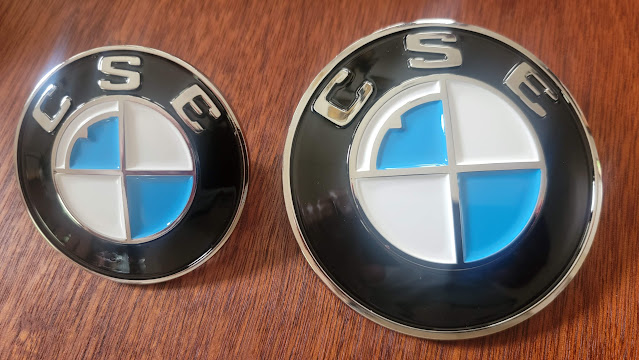The Tesla batteries need to be wired up in series to get to the 350+ volts
necessary to operate the Tesla drive unit. This means connecting them
all together, one by one. This could be done with cables but they'd have
to be big cables because the drive unit can draw up to 680 amps under full
throttle. Cables that large are hard to work with so a better
alternative is copper buss bars.

|
|
Building up all the buss bars
|
In my original front battery box design I had purchased or fabricated buss
bars for all but one of the connections -- the long, awkward route from the #7
battery on top of the box back to the #8 battery in the stack. For that,
I was using a 0/2 gauge cable. But that was ugly so, despite the warning
from the Orion BMS manual (shown below), I decided to build a buss bar for
that too.
"Only approved, professionally manufactured busbars should be used to connect
cells together. Do not use aluminum busbars or aluminum wire for any cables.
Do not use homemade busbars. In most cases, busbars must be somewhat flexible
(such as braided flat cable or strips with bends in them). This is usually
necessary as to not transmit vibration to the cell terminals as well as for
reliability from temperature cycling. Busbar / interconnect metal finish is
also very important for long term reliability. Bare, unplated copper busbars
have been known to corrode or oxidize quickly, which can lead to high
resistance connections between cells resulting in reduced reliability."
All the other bars in my system were created by just bending copper flat bar
stock but the angles on this longer one required brazing two pieces
together. Fortunately, Brett has been practicing his brazing
skills. We learned that copper is an efficient heat conductor and it
takes a LOT of heat to get a good weld with the TIG welder (unless you have
helium gas, which we didn't).
 |
| For best results, add heat with a torch before trying to braze |
Once all the bars were built for my car, we dissembled Paul's battery box to
remove all his. He has a number of bars in his setup and, given the
warning above, we wanted to get all of the copper bar nickel plated to prevent
corrosion.

|
|
Bare copper bars from both cars
|

|
|
Nickel plated bars (wrapped in protective plastic)
|
Once plated, I wanted to add some safety and professionalism by insulating the
non-contact portions of the bars with thick rubber coatings, in orange to
designate high voltage. This was a multi-step process. First, dip
the bars in a liquid rubber dip, which is not available in orange. Then
spray with Plastidip (available in orange but only with a satin finish).
Finally, spray with Plasidip Glossifier clear coat to make glossy and provide
UV protection.

|
|
Dipped in white rubberized coating and hanging to dry.
|

|
|
Colored and cleared Plastidp over nickel plating
|
 |
| All buss bars plated, insulated, colored, and installed. Color is a bit more neon that the older, purchased, bars |









